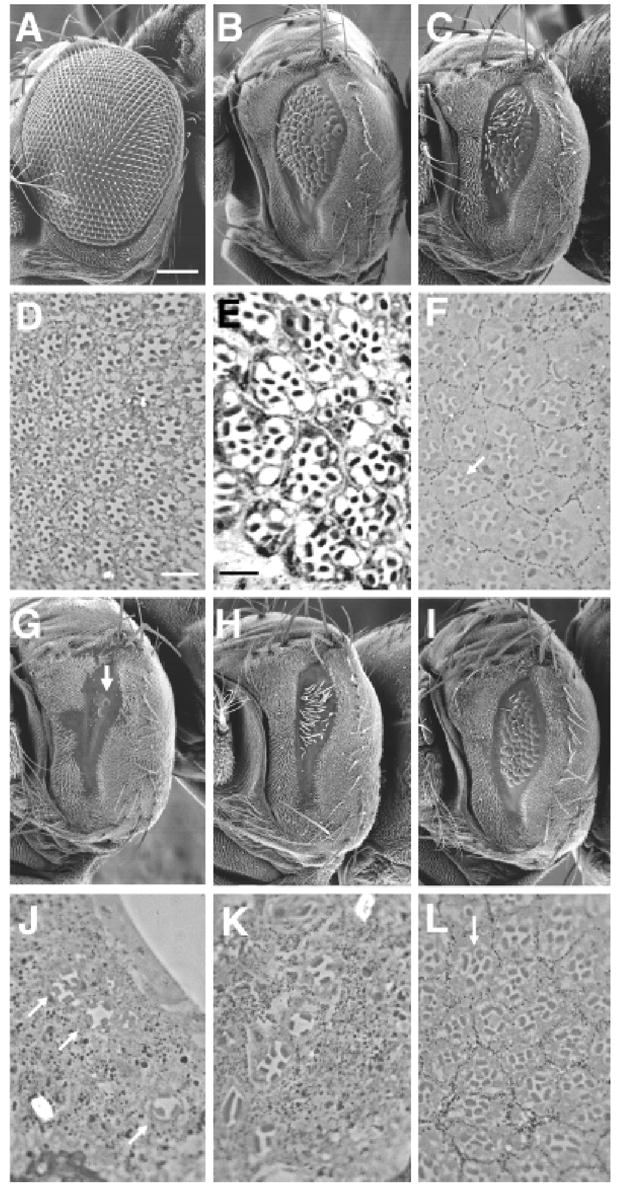Fig. 2.

Xath5 and Math5 rescue fly photoreceptor development differently. Scanning electron micrographs (A–C, G–I) and histologic sections (D–F, J–L) of adult Drosophila compound eyes. All histologic sections are at the proximal level of the retina where R8 photoreceptor cells are found. (A and D) w-; gal4-7, ato1/TM6Tb eyes are normal in size (A) and photoreceptor cell composition (D). (B and E) atonal-rescued eye with extra R8 cells in many ommatidia (E and Sun et al. 2000). (C and F) Xath5-rescued eye is slightly smaller size than atonal rescue. Cells that morphologically resemble R8s are present in these ommatidia (arrow in F). (G and J) Math5-rescued eye with two ommatidia (arrow in G). The total number of ommatidia observed varied from 2 to 20 (n≥20 eyes). Histologic sections of these rare ommatidia contain fewer than eight photoreceptor cells per ommatidium (arrows in J) with no clearly identifiable R8 cells. (H and K) Scute-rescued eye. Scute induces extra interommatidial bristles (H) and small numbers of ommatidia, mostly lacking R8 cells (K and Sun et al. 2000) (I and L) NeuroD-rescued eye is the same size as Xath5- rescued eye (compare I with C) and has R8-containing ommatidia (arrow in L). Scale bars: A, 100 μm; D, 10 μm; E, 3 μm.
